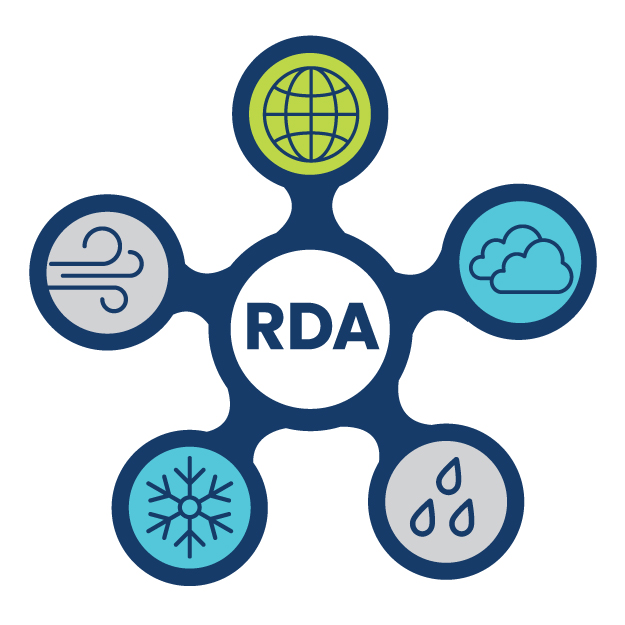This historical dataset is recommended for ancillary use only and not as a primary research dataset. It has likely been superseded by a newer, improved dataset.
Abstract:
NOTE: This dataset has been superseded by CMORPH version 1.0, which is available in RDA dataset ds502.2. Users are advised to transition to this updated dataset.
CMORPH (CPC MORPHing technique) produces global precipitation analyses at very high spatial and temporal resolution. This technique uses precipitation estimates that have been derived from low orbiter satellite microwave observations exclusively, and whose features are transported via spatial propagation information that is obtained entirely from geostationary satellite infrared data. Precipitation estimates are derived from the passive microwaves aboard the DMSP 13, 14 and 15 (SSM/I), the NOAA-15, 16, 17 and 18 (AMSU-B), and AMSR-E and TMI aboard NASA's Aqua and TRMM spacecraft, respectively. These estimates are generated by algorithms of Ferraro (1997) for SSM/I, Ferraro et al. (2000) for AMSU-B and Kummerow et al. (2001) for TMI. Note that this technique is not a precipitation estimation algorithm but a means by which estimates from existing microwave rainfall algorithms can be combined. Therefore, this method is extremely flexible such that any precipitation estimates from any microwave satellite source can be incorporated.
Temporal Range:
2002-12-07 00:00 +0000 to 2017-10-02 21:00 +0000
Data Contributors:
DOC/NOAA/NWS/NCEP/CPC
Climate Prediction Center, National Centers for Environmental Prediction, National Weather Service, NOAA, U.S. Department of Commerce
Publications:
Kummerow, C., Y. Hong, W. S. Olson, S. Yang, R. F. Adler, J. McCollum, R. Ferraro, G. Petty, D. Shin, and T. T. Wilheit, 2001:
The Evolution of the Goddard Profiling Algorithm (GPROF) for Rainfall Estimation from Passive Microwave Sensors.
Journal of Applied Meteorology,
40, 1801-1820 (DOI: 10.1175/1520-0450(2001)040<1801:TEOTGP>2.0.CO;2).
Data Formats:
Binary (see dataset documentation)
Related RDA Datasets:
-
GPCC Full Data Reanalysis Version 7.0: Monthly Land-Surface Precipitation from Rain Gauges built on GTS based and Historic Data
-
GPCC Full Data Daily Version 1.0: Daily Land-Surface Precipitation from Rain Gauges built on GTS based and Historic Data
-
NOAA Climate Data Record (CDR) of CPC Morphing Technique (CMORPH) High Resolution Global Precipitation Estimates, Version 1
-
Global Precipitation Climatology Project (GPCP) Climate Data Record (CDR), Version 2.3 (Monthly)
-
Global Precipitation Climatology Project (GPCP) Climate Data Record (CDR), Version 1.3 (Daily)
Metadata Record:

Citation counts are compiled through information provided by publicly-accessible APIs according to the guidelines developed through the https://makedatacount.org/ project. If journals do not provide citation information to these publicly-accessible services, then this citation information will not be included in RDA citation counts. Additionally citations that include dataset DOIs are the only types included in these counts, so legacy citations without DOIs, references found in publication acknowledgements, or references to a related publication that describes a dataset will not be included in these counts.

 This work is licensed under a Creative Commons Attribution 4.0 International License.
This work is licensed under a Creative Commons Attribution 4.0 International License.